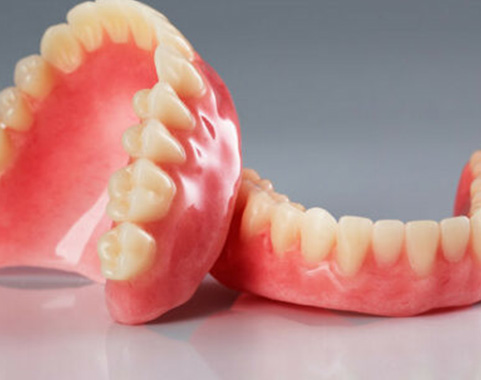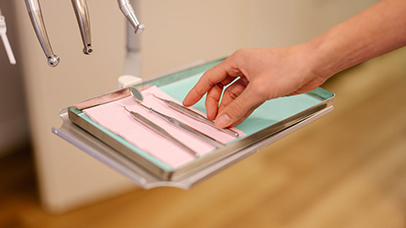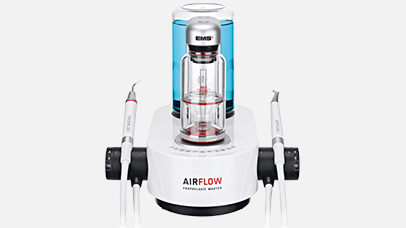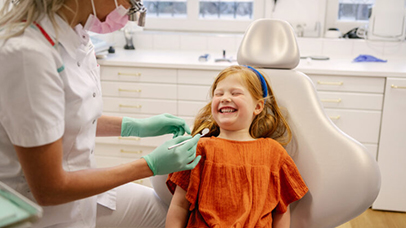How do removable dentures work?
A removable dental prosthesis or dentures serves to replace missing teeth. There are different types, namely for single tooth replacement, but also for replacing all teeth in the upper and/or lower jaw. When we talk about single tooth replacement, we call it a partial denture or a partial plate. For example, it can also be reinforced with a metal base and cast anchors and then we call it a frame prosthesis.

Making a removable denture: From impression to perfectly fitting denture
The collective name of all these types is a removable prosthesis. After all, you remove the prosthesis because it is not stuck in the mouth. The prosthesis is individually tailored in collaboration with a dental laboratory. To make this as suitable as possible, a number of steps must be taken.
Step 1
The first print. This is made of a rigid material: alginate. This impression contains all the information the dental laboratory needs to map out the dental situation. In the lab, the impressions are poured into plaster models on which an individual impression tray is made.
Step 2
The second print, or the individual print. An impression is now made again using the individual impression tray that the laboratory has made, but this time a precision impression. Much attention is paid to details for your new prosthesis. Namely how far the edges should run and how the muscles move in the mouth.
Step 3
Now the dental technician has enough information to make a test prosthesis. A prosthesis is made in wax based on the current dental situation. Bite plates are also placed in this. You come back to the dentist to register your bite. The bite registration is accurately recorded by heating the wax walls and letting you bite close. During this appointment, the color of the teeth in the new prosthesis will also be examined with you. If you still have teeth, this will be adjusted accordingly, if you have no more teeth, this will be discussed with you.
Step 4
During this step, the new denture with the selected color of teeth is fitted. However, the prosthesis has not yet been pressed, so some changes can still be made. If you and the dentist are satisfied, the prosthesis will be pressed and you can pick it up at the next appointment.
Important: A new prosthesis is not immediately ideal, it is always a matter of getting used to it. Eating will also be a bit more difficult in the beginning. Therefore, start with soft foods first and build up slowly. Large pieces of food are best cut into pieces. You will soon experience what you can and cannot handle with your dentures. After all, it is not stuck like your own teeth. Do not be unexpectedly surprised, because the expectation that the prosthesis gives the same experience as your own teeth is unfortunately not true. Please take this into account when making your decision!
What do dentures cost?
A full set of dentures (upper jaw + lower jaw) is reimbursed once every 5 years from the basic insurance with a minimum deductible of 375 euros. Your own contribution is 25% of the total costs.
Example of calculation of new upper and lower prosthesis
Total costs upper and lower denture = 1100 euros
25% of 1100 euros = 275 euros own amount
Please note: If you have not yet made a claim for your own risk, an additional amount of 375 euros will be added to this, bringing you to a total of 275+375 = 650 euros personal contribution!
Partial dentures of more than 4 elements**
| Description | Code | Number | Cost |
| Partial dentition | P15 | 1 | € 161.36 euros |
| Surcharge for individual edge construction | P16 | 1 | €59.16 euros |
| Surcharge cast anchor | P18 | 2 | € 32.28 euros |
| Dental technology costs picture | P15* | 1 | € 250.00 euros |
| Total* | € 502.80 euros |
Frame prosthesis of more than 4 elements**
| Code | Description | Number | Cost |
| P004 | Frame dentures, 5-13 elements | 1 | € 345,65 |
| P004 | Technique / material costs | € 590,00 | |
| Total | € 935,65 |
* This is only an indication of the costs. Please contact us for a tailor-made budget.
** The above prices are based on the rates from the year 2023. The most recent rates can be found on our website on the 'rates and invoice' page.
If you have specific questions, you can always contact us by phone or fill in the contact form.
Contact Register immediately



